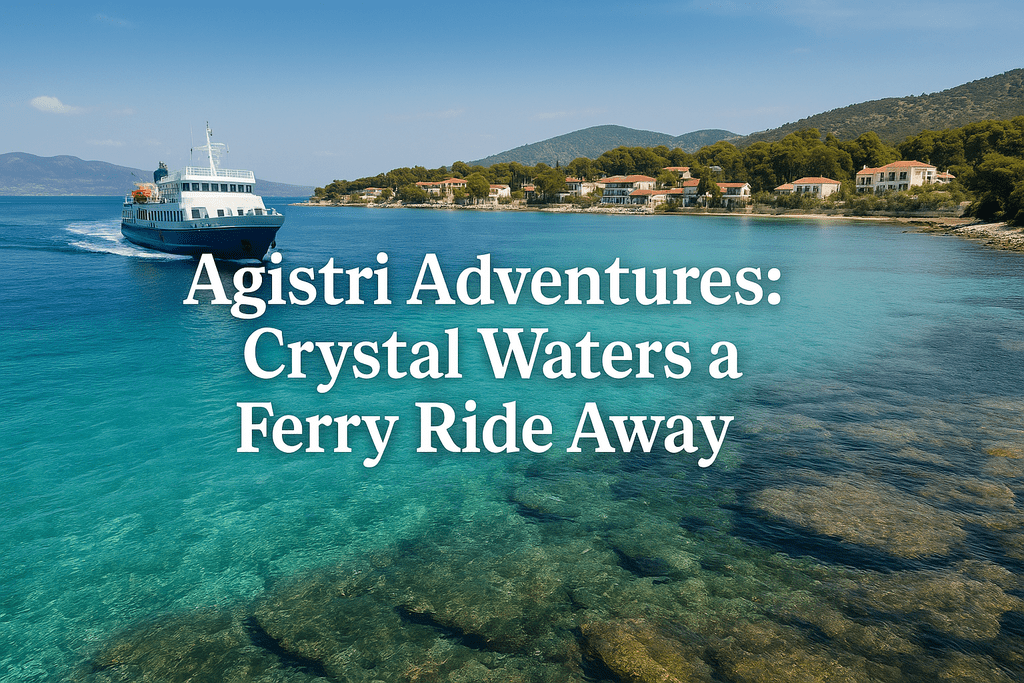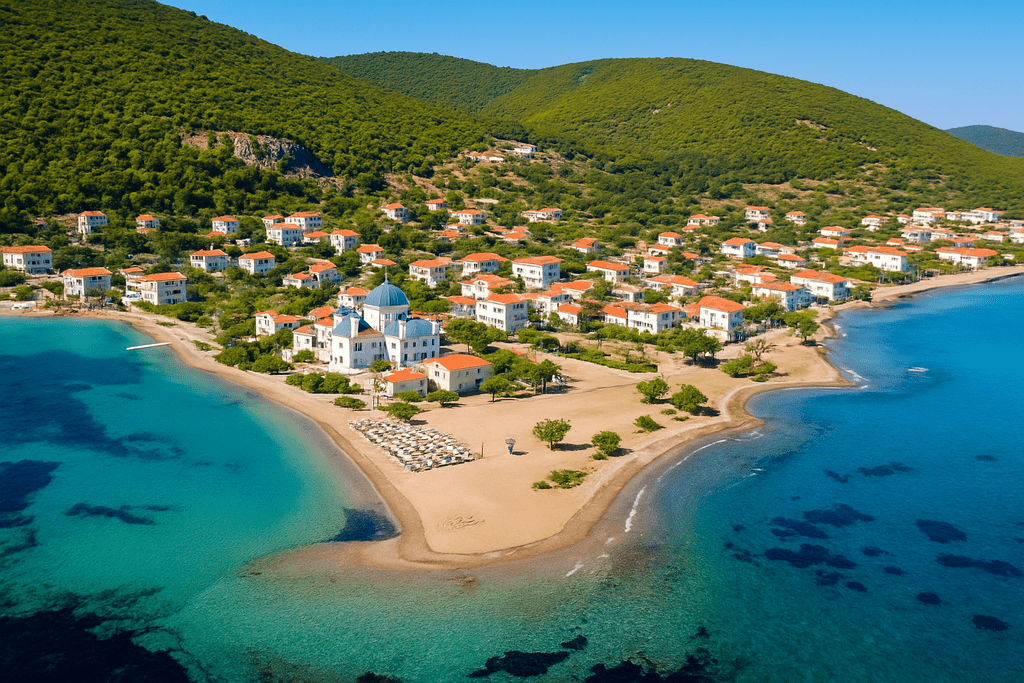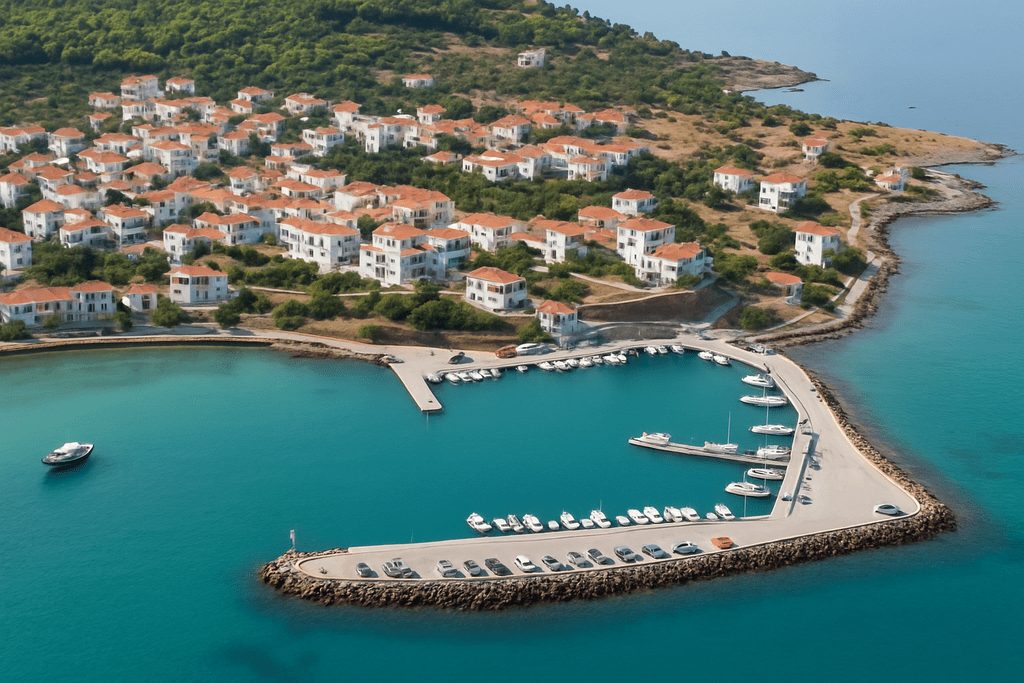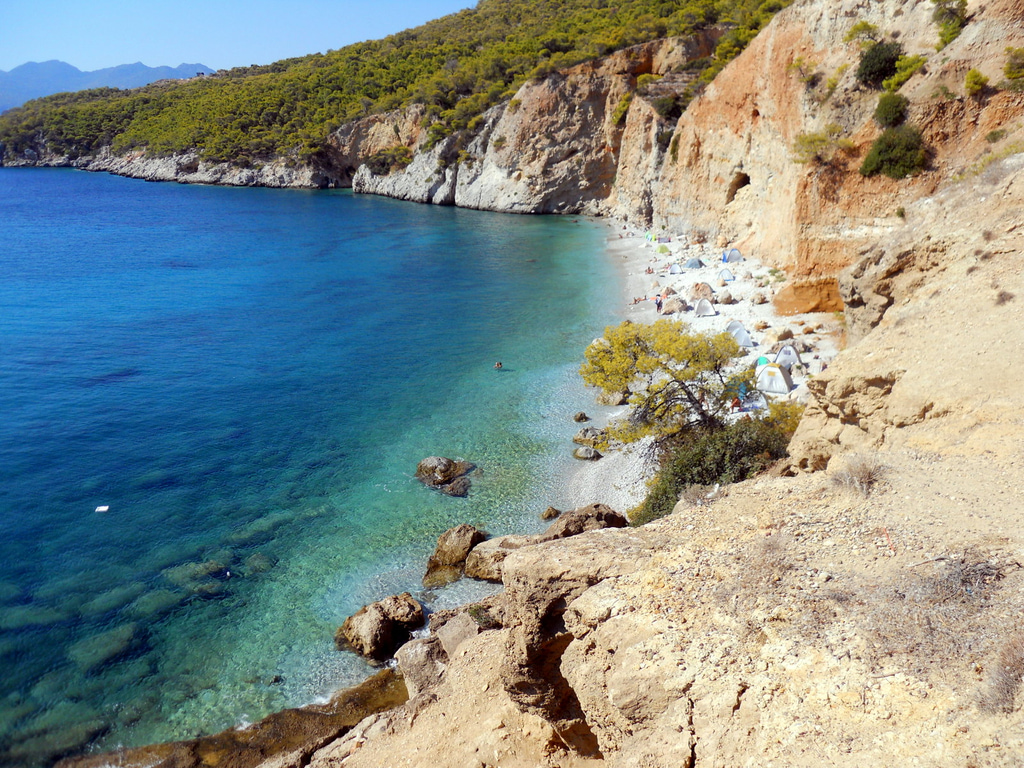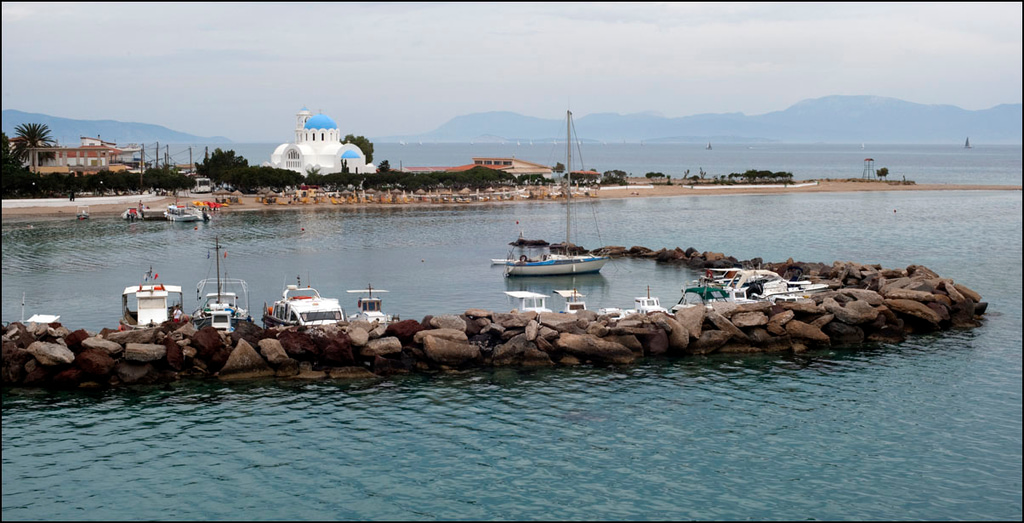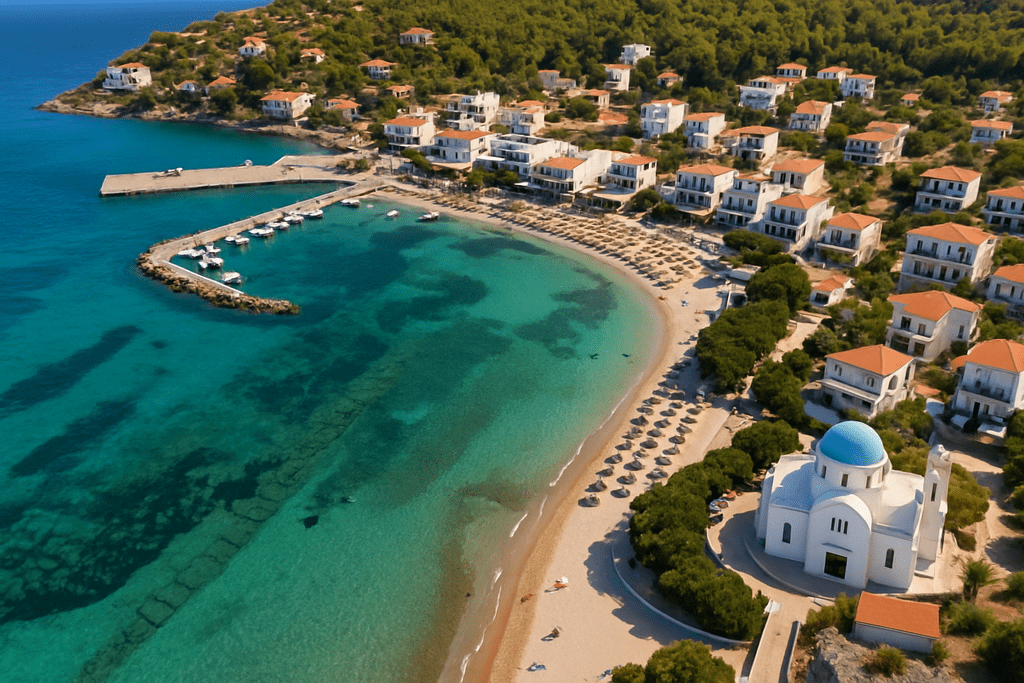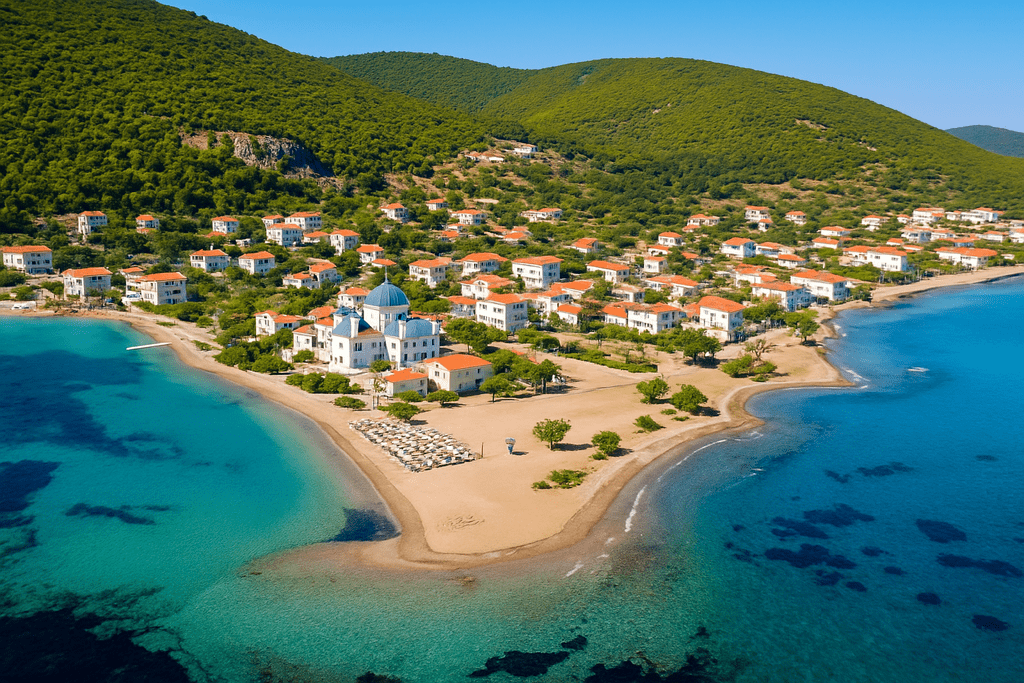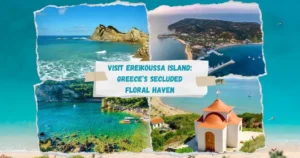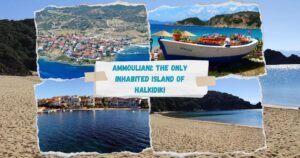Agistri Adventures: Crystal Waters a Ferry Ride Away
It’s funny how some places just… stick with you, isn’t it? Not necessarily the big, flashy destinations that scream from travel brochures, but the quieter corners of the world that somehow whisper their way into your memory. For me, one of those whispers belongs to Agistri. I stumbled upon it, almost by accident, during a trip to Athens a while back. Overwhelmed by the glorious chaos of the city, I found myself craving a breath of sea air, a patch of blue that wasn’t just the sky peeking between ancient ruins and modern concrete. Someone – a friendly barista, I think, noticing my slightly frazzled look – mentioned a small island, just a ferry ride away. “Agistri,” he said, rolling the ‘r’ slightly. “Pine trees down to the water. Very peaceful.”
Peaceful. That sounded like exactly what I needed. And honestly? It delivered more than I could have imagined. Agistri isn’t trying to be Mykonos or Santorini. It doesn’t have the dramatic caldera views or the thumping beach clubs. What it has is something quieter, something… real. It’s this little emerald speck in the Saronic Gulf, a genuine escape hatch from the intensity of Athens, yet so ridiculously close you could almost swim there (well, maybe not *quite*). Think dense pine forests tumbling down hillsides to meet water so clear it feels like you’re swimming in liquid turquoise. It’s the kind of place where time seems to slow down, where the loudest sound might be the cicadas buzzing in the afternoon heat or the gentle lapping of waves against the shore.
Maybe you’re like I was, standing in the heart of Athens, feeling the pull of the Greek islands but not quite ready for the full-blown island-hopping commitment. Or perhaps you’re just looking for somewhere genuinely lovely, somewhere you can recharge and reconnect with nature without sacrificing accessibility. If so, then maybe, just maybe, Agistri is whispering to you too. Let’s take that ferry ride together, shall we? Let’s go explore this little slice of Saronic paradise.
Getting There: The Journey to Agistri
There’s something wonderfully symbolic about a ferry journey, isn’t there? That liminal space between departure and arrival, where you’re neither here nor there but somehow suspended between worlds. The journey to Agistri begins at Piraeus, Athens’ ancient port that’s been sending travelers across the Aegean for millennia. I remember standing on the dock that first morning, coffee in hand, watching the early light catch on the water while ferry workers called out destinations that sounded like poetry: Aegina, Poros, Hydra, Spetses… and among them, Agistri.
The ferry itself was nothing fancy – just one of those sturdy workhorses of the Greek maritime fleet that connects the scattered pieces of this island nation. I suppose I could have taken the faster hydrofoil (or “flying dolphin” as they’re often called), which zips across to Agistri in about 55 minutes. But there was something appealing about the slower pace of the conventional ferry, which takes around an hour and a half. Time to watch Athens gradually recede, its sprawl of white buildings and the distant Acropolis growing smaller until they’re just a hazy outline against the mainland’s mountains.
The Saronic Gulf opened up around us, that impossible blue that somehow never looks quite real in photographs. A few other islands slid past – most notably Aegina, Agistri’s larger neighbor. Fellow passengers were a mix of obvious tourists (like me, I suppose, though I tried not to look it), weekending Athenians with their designer sunglasses and casual confidence, and locals returning home with shopping bags and the occasional caged chicken. A microcosm of Greek life, all of us sharing this journey across the water.
If you’re planning your own escape to Agistri, the practicalities are refreshingly simple. Ferries run several times daily from Piraeus, with more frequent connections during the summer months. You can choose between the conventional ferry (which can carry vehicles and is slightly cheaper) or the faster hydrofoil service. Either way, I’d recommend booking tickets a few days in advance during peak season – especially for weekend travel when Athenians flee the city heat. Websites like Ferryscanner make this pretty straightforward, though you can also buy tickets at the port if you’re feeling spontaneous and aren’t traveling during high season.
The approach to Agistri is your first hint that this place is special. As the ferry slows and begins its careful maneuver into the harbor at Skala (the island’s main port), you’ll notice how the dense pine forests seem to tumble right down to the shoreline. The water clarity is immediately apparent – even from the deck, you can see straight to the seabed in the shallows. The harbor itself is modest but charming, with a handful of cafés and tavernas lining the waterfront, their tables set invitingly close to the water’s edge.
Stepping off the ferry onto Agistri soil, that first breath of pine-scented air mingled with salt spray feels like permission to exhale fully, perhaps for the first time in weeks. The pace immediately slows. There’s no rush here, no urgency. Just the gentle rhythm of island life waiting to embrace you. And that, I think, is when my love affair with this little island truly began – not with the dramatic flourish of a spectacular vista, but with that first quiet moment of arrival, that sense of having found somewhere that allows you to simply be.
The Island’s Character: Pine Forests Meet Azure Waters
Agistri is tiny. Genuinely, adorably tiny. At just over 13 square kilometers, you could walk across its widest point in a couple of hours if you were feeling ambitious. But what this little island lacks in size, it makes up for in character. I’ve visited quite a few Greek islands over the years, and each has its own distinct personality. Santorini is dramatic, Mykonos is glamorous, Crete is proud and diverse. Agistri? Agistri is serene. There’s a gentle, unassuming quality to the place that seeps into your consciousness, slowing your thoughts and easing the tension from your shoulders almost without you noticing.
The island’s most striking feature – and the one that sets it apart from many of its more barren Aegean cousins – is its lush covering of pine forest. These aren’t the manicured, orderly pines of a suburban park, but wild, sprawling Aleppo pines that have claimed the island as their own, creating a dense emerald canopy that covers much of the interior. In the height of summer, when the Greek sun beats down mercilessly, these forests offer blessed shade and fill the air with their distinctive resinous scent – a smell that, even now, instantly transports me back to Agistri’s winding paths.
The contrast between this verdant landscape and the startling blue of the surrounding sea creates a visual harmony that feels almost too perfect to be natural. Standing on one of the island’s higher points, looking out over that patchwork of green and blue, I remember thinking that if someone had painted this scene, I might have accused them of exaggerating the colors. But that’s the Mediterranean for you – it doesn’t do subtle when it comes to its palette.
What makes Agistri particularly special is how these forests extend almost to the water’s edge in many places. You can swim in crystal clear waters with the scent of pine carried on the breeze – an experience that feels uniquely Greek yet somehow distinct from the more familiar island imagery. It’s this combination that has earned Agistri its reputation as possibly the “greenest” of all the Greek islands, a claim I’m inclined to believe after seeing it for myself.
The island has been inhabited since ancient times, though it’s never played a starring role in Greek history. Its more recent heritage includes a strong influence from Arvanite settlers – an Albanian-speaking community that settled in many parts of southern Greece from the late Middle Ages onwards. You might not immediately notice this cultural layer as a casual visitor, but it adds another dimension to the island’s character for those interested in digging a little deeper.
What you will notice, however, is the pace of life. Island time is a real phenomenon, and on Agistri, it seems to tick even slower than elsewhere. Nobody rushes here. Why would they? The distances are short, the views are long, and there’s a palpable sense that whatever needs doing will get done… eventually. It’s contagious, this unhurried approach. I found myself abandoning my watch after just a day or two, letting the rhythm of the island – the morning ferry arrivals, the midday heat that drives everyone to shade or sea, the golden evening light that signals dinner time – structure my days instead.
There’s something else about Agistri that’s harder to define but impossible to miss once you’ve spent some time there. It’s a kind of authenticity, a sense that the island exists primarily for itself rather than for tourism. Yes, visitors are welcomed warmly, and yes, there’s infrastructure to support them, but unlike some Greek islands that seem to exist in a perpetual performance of “Greekness” for foreign consumption, Agistri feels refreshingly real. People live here, work here, grow old here. Tourism is part of life, not its sole purpose.
Perhaps that’s why so many Athenians choose Agistri for their own escapes. They’re not looking for a sanitized, postcard version of Greece – they live in Greece, after all. They’re looking for a place where they can reconnect with a simpler, more elemental version of their country: the sea, the forest, the food, the unhurried conversations that stretch long into the evening. And in Agistri, that’s exactly what they find.
Village Life: Exploring Agistri’s Settlements
For an island so small, Agistri manages to pack in a surprising amount of variety in its settlements. There are really only three villages of note here – Megalochori (also called Milos), Skala, and Limenaria – each with its own distinct personality and appeal. They’re like siblings who grew up in the same house but developed completely different tastes and temperaments.
Megalochori is the island’s official capital, though that grand title belies its modest size and laid-back character. It’s the older of the main settlements, and it shows in the best possible way. Wandering through its narrow streets away from the harbor front, I found myself charmed by the traditional stone houses, some of them beautifully preserved with their wooden shutters painted in fading blues and greens. There’s an authenticity to Megalochori that feels increasingly precious in our Instagram-filtered world – this isn’t a place that’s been prettified for tourists, but a living, breathing community that happens to welcome visitors into its midst.
The harbor area is where most of the action happens, with a handful of tavernas and cafés lining the waterfront. I spent one particularly memorable evening at a table right by the water’s edge, watching fishing boats gently bobbing while eating grilled octopus that had probably been swimming in the same waters just hours earlier. The harbor is also where you’ll find the island’s main cathedral, Zoodochos Pigi, its whitewashed walls and blue dome embodying that classic Greek island aesthetic we all know and love.
A little further inland, I stumbled upon one of the island’s more unexpected historical features – a windmill dating back to 1812, with the date still visible carved into its stone. It stands as a silent witness to the island’s agricultural past, a reminder that long before tourists arrived, people here made their living from the land and sea. Nearby, there are also ruins of an ancient quarry and some cist graves for those with an archaeological bent.
Just a couple of kilometers away lies Skala, which serves as the island’s main port and tourist center. The contrast with Megalochori is immediately apparent – Skala is newer, more developed, and unabashedly oriented toward visitors. The buildings here are mostly modern, painted in that gleaming Mediterranean white that reflects the summer sun almost blindingly. What Skala lacks in traditional charm, it makes up for in convenience and amenities. This is where you’ll find most of the island’s hotels, restaurants, and shops, all clustered around a beautiful stretch of sandy beach.
Despite its more commercial nature, Skala has its own kind of appeal. There’s an infectious holiday atmosphere, especially in the evenings when the beachfront promenade comes alive with families strolling, couples dining, and friends gathering for drinks. The harbor itself is picturesque, particularly at sunset when the fishing boats and small yachts create perfect silhouettes against the pink and orange sky. I found myself drawn to a particular café at the far end of the beach, where I could watch the last swimmers of the day reluctantly leaving the water while nursing a cold Mythos beer.
For those seeking a glimpse of Skala’s older character, a walk up to the Metochi neighborhood rewards with some traditional architecture and quieter streets. This hillside area was actually the original settlement before development spread down to the shore, and it retains something of that older island rhythm. Similarly, heading south along the coast brings you to Skliri, which feels like Skala’s more relaxed cousin, with a lovely beach and some excellent fish tavernas perched right over the water.
And then there’s Limenaria, the island’s third village, tucked away on the southwestern side of the island. Getting here requires a bit more effort – either a longish walk, a bus ride, or your own wheels – but that’s precisely what keeps it special. Limenaria is tiny, really just a hamlet nestled between pine-covered hills, with a population that probably numbers in the dozens rather than hundreds. There’s a palpable sense of having stepped back in time here, with chickens pecking in dusty yards and elderly residents sitting in the shade of ancient olive trees.
The village itself doesn’t have direct access to the sea, but it’s just a short walk to some of the island’s most beautiful and less-frequented beaches. The church of Agia Kyriaki dominates the small settlement, its bell tower visible through the trees as you approach. I remember stopping here briefly during a hike across the island, drinking cool water from the village fountain and exchanging nods with a few locals who regarded me with friendly curiosity. No English was spoken, no services offered – just a genuine moment of connection in a place that still moves to the ancient rhythms of Greek rural life.
What struck me most about Agistri’s villages wasn’t any particular sight or attraction, but rather the easy coexistence of different paces and styles of life within such a small area. In the space of a single day, you can experience the relative buzz of Skala, the traditional charm of Megalochori, and the timeless tranquility of Limenaria. It’s this variety, compressed into a tiny island, that gives Agistri a depth of character that belies its modest size.
Beach Paradise: Agistri’s Crystal Waters
If there’s one thing that draws people to Greek islands, it’s the promise of those impossibly blue waters. And on this front, Agistri delivers spectacularly. The island is ringed with beaches of all sorts – sandy stretches, pebbly coves, organized beach clubs, and wild, untouched shores where you might not see another soul all day. Each has its own character, its own particular charm. Let me take you on a tour of my favorites.
Aponissos Beach was, without question, the highlight of my beach explorations on Agistri. Located on the southwestern tip of the island, it’s technically not even on Agistri proper but on a tiny islet connected to the main island by a narrow causeway. There’s something magical about crossing that short stretch of water, leaving even the relative civilization of Agistri behind for somewhere even more removed from the everyday world.
The beach itself is part of a private beach club, which means there’s an entrance fee (around 6 euros when I visited), but it’s absolutely worth it. The water here is… well, I’m running out of synonyms for “clear” and “blue,” but trust me when I say it’s exceptional even by Greek standards. The seabed is visible even at considerable depth, with fish darting between patches of sand and rock. The islet creates a natural lagoon effect, with water so calm and inviting it’s almost impossible to resist.
The beach club provides sunbeds and umbrellas (though it’s wise to reserve these in advance during high season), and there’s a good restaurant serving fresh seafood and cold drinks. I spent a full day here, alternating between swimming in that incredible water, dozing under an umbrella, and gazing out at the views toward neighboring islands. It was one of those perfect, timeless days that vacation dreams are made of.
A completely different experience awaits at Chalikiada Beach on the eastern side of the island. Getting here is part of the adventure – it involves a 10-minute hike through the pine forest from the Skliri area, followed by a somewhat precarious scramble down some rocks. The effort keeps the crowds away, which is precisely what makes it special.
Emerging from the forest path, I was met with a view that literally stopped me in my tracks: a crescent of smooth pebbles embraced by dramatic red cliffs, with water so clear and blue it looked almost unreal. The beach is known for its naturist section, so if public nudity makes you uncomfortable, you might want to stick to the northern end. Personally, I found the relaxed, judgment-free atmosphere refreshing – there’s something liberating about swimming in those pristine waters exactly as nature intended.
There are no facilities here – no sunbeds, no tavernas, no changing rooms – just the beach, the cliffs, the forest, and the sea. I’d recommend bringing water, snacks, and anything else you might need for the day. Also, a pair of water shoes wouldn’t go amiss, as there are sea urchins among the rocks in some areas.
For something more accessible but still beautiful, Dragonera Beach on the western coast strikes a perfect balance. This organized beach has a great beach bar with sunbeds and umbrellas, yet somehow maintains a relaxed, unpretentious vibe. The beach itself is mainly pebbly, sloping gently into crystalline waters that are perfect for swimming and snorkeling.
I spent a lazy afternoon here, alternating between cooling dips in the sea and lounging with a book and a freddo espresso from the beach bar. The music was chilled, the crowd was a pleasant mix of locals and visitors, and the sunset view was spectacular. Just one word of caution echoing what I heard from locals: watch out for sea urchins! They’re a sign of clean water, but not so friendly to unwary feet.
For those staying in or near Skala, the town’s own beach offers convenience without sacrificing beauty. Skala Beach stretches along much of the town’s waterfront, with sections ranging from fully organized with rows of sunbeds to more natural areas where you can throw down a towel on the sand. The water is calm and shallow near the shore, making it ideal for families with children.
What I particularly loved about Skala Beach was its accessibility – you can easily pop back to your hotel to freshen up, grab lunch at one of the many tavernas lining the promenade, or pick up supplies from the local shops. It’s also a prime spot for people-watching, with a constant parade of locals and visitors creating that quintessential Greek island atmosphere.
For a quieter alternative near the main settlements, Megalochori Beach offers a more laid-back experience. The beach here is narrower than at Skala, with coarser sand and some pebbles, but the water is just as inviting. There are a few tavernas nearby where you can grab a meal or a drink, but the overall vibe is more relaxed than at its busier neighbor.
If you’re up for venturing further afield, Mariza Beach near Limenaria village rewards with unspoiled beauty and excellent swimming from a platform. It’s relatively undeveloped, providing a serene atmosphere for those looking to escape the more popular spots. Similarly, Skliri Beach offers a tranquil alternative to the busier beaches, with pine trees providing natural shade and turquoise waters beckoning swimmers.
What makes Agistri’s beaches particularly special isn’t just their individual beauty, but their variety and accessibility. On an island this small, you can easily sample several different beaches in a single day if you’re feeling energetic. Or, if you’re like me, you might find your perfect spot and return day after day, watching how the same stretch of shore transforms with different lights, moods, and tides.
The beaches of Agistri aren’t just places to swim and sunbathe – they’re the island’s living rooms, dining rooms, and social clubs. They’re where life happens during the warm months, where friendships form, romances blossom, and memories are made. Each has its own personality, its own community, its own rhythm. All share that extraordinary water – the kind of blue that seems to seep into your soul and stay there long after you’ve returned home.
Island Activities: Beyond the Beach
While Agistri’s beaches might be its most obvious draw, limiting yourself to just sun and sea would mean missing out on some of the island’s most rewarding experiences. This little patch of paradise offers plenty of ways to engage with its natural beauty and laid-back culture beyond simply lounging on the shore.
Hiking through Agistri’s pine forests quickly became one of my favorite activities during my stay. The island is crisscrossed with paths and trails of varying difficulty, many of them unmarked but easily followed. I’m not exactly what you’d call an experienced hiker – my usual exercise regime involves walking to the fridge and back – but even I found the terrain manageable and the rewards immense.
One morning, I set off early to beat the heat, following a rough trail from Skala up into the hills. The air was thick with the scent of pine resin, almost intoxicating in its intensity. Cicadas provided a constant soundtrack, their rhythmic chirping rising and falling like some strange natural metronome. As I climbed higher, glimpses of the sea appeared between the trees, patches of impossible blue framed by green needles and rough bark.
Reaching a clearing near one of the island’s highest points, I was treated to a panoramic view that quite literally took my breath away (though that might also have been the climb). The entire island lay spread out below me, a tapestry of forest and settlement surrounded by the vast blue expanse of the Saronic Gulf. In the distance, I could make out the hazy outlines of neighboring islands and, further still, the mainland mountains. It was one of those moments when you feel simultaneously tiny and enormous – a speck in the grand scheme of things, yet somehow connected to everything you can see.
For those who prefer their exploration with a bit more structure, there are several well-established hiking routes on the island. A particularly popular one runs from Megalochori to Limenaria, passing through the heart of the pine forest before descending to the island’s quietest village. Another scenic route connects Skala to Chalikiada Beach, combining forest hiking with the promise of a refreshing swim at the end.
If hiking sounds too much like hard work (and hey, no judgment – it’s your vacation), cycling offers another excellent way to explore. The island’s small size and relatively flat coastal roads make it perfect for leisurely bike rides. Many hotels offer bicycle rentals, or you can find rental shops in both Skala and Megalochori. I spent one delightful afternoon pedaling along the coastal road between the two main villages, stopping whenever a view or a secluded cove caught my eye. There’s something wonderfully freeing about having your own wheels on an island this size – everything becomes accessible at your own pace.
Water activities, naturally, feature prominently in Agistri’s recreational offerings. For those who want to explore the coastline from a different perspective, small boat rentals are available from operators in Skala and Limenaria. You don’t need a special license for the smaller motorboats, and they’re surprisingly easy to handle even for novices like myself. I rented one for a half-day and puttered along the coast, discovering tiny coves inaccessible by land and marveling at how the water clarity allowed me to see straight to the seabed even in deeper areas.
For a more guided aquatic experience, Agistri is home to Interdive Diving Club in Megalochori, which offers both snorkeling excursions and proper scuba diving for all levels. I opted for a snorkeling trip, which included a visit to the tiny uninhabited islet of Dorousa. Floating in that crystal-clear water, watching fish dart among rocks and seagrass, I felt a profound sense of peace that’s hard to describe but impossible to forget. The trip concluded with a beach BBQ featuring fresh Greek food – the perfect end to a day of exploration.
Speaking of Dorousa, boat excursions to this and other nearby islets are popular activities for visitors to Agistri. Metopi islet, which was historically used as Agistri’s vineyard, makes for an interesting visit, as does the larger neighboring island of Aegina. Several operators offer day trips that combine multiple destinations, often including swimming stops and meals.
For those interested in the island’s cultural side, timing your visit to coincide with one of Agistri’s traditional festivals can add another dimension to your experience. The island celebrates several religious feast days throughout the year, including Zoodochos Pigi (the Friday after Easter), Agioi Anargyroi (July 1st), Agia Kyriaki (July 7th), and the Dormition of the Mother of God (August 15th). These celebrations typically involve church services followed by music, dancing, and plenty of food and drink in the village squares. Even as an outsider, I found myself welcomed into these celebrations, the boundaries between visitor and local temporarily dissolved in the shared joy of the moment.
For a quieter cultural experience, exploring the island’s churches offers insight into its religious heritage. Beyond the main cathedral in Megalochori, there are several smaller churches and chapels scattered across the island, many of them hundreds of years old. The church of Agioi Anargyroi in Skala is particularly worth a visit, as is the picturesque chapel of Profitis Ilias perched on the hilltop of Dorousa islet (visible from Agistri’s shores).
What struck me most about activities on Agistri was their unforced, organic nature. There are no elaborate adventure parks, no contrived “authentic experiences” packaged for tourist consumption. Instead, there’s simply the island itself, offering its natural beauty and traditional way of life to those willing to engage with it on its own terms. Whether that means hiking its forests, swimming in its waters, cycling its roads, or simply sitting in a village square watching local life unfold, the joy comes from the simplicity and authenticity of the experience.
In a world increasingly dominated by carefully curated and commodified travel experiences, there’s something profoundly refreshing about a place that simply invites you to be present, to discover at your own pace, and to find your own meaningful connections with the landscape and culture. That, perhaps more than any specific activity, is Agistri’s greatest gift to those who visit its shores.
Culinary Delights: Eating Your Way Through Agistri
Food, for me, is never just sustenance – it’s a gateway to understanding a place, its people, and its culture. And Greek cuisine? Well, it’s one of those rare culinary traditions that manages to be both simple and profound at the same time. On Agistri, this culinary heritage comes alive in ways that are both authentic and deeply satisfying.
Seafood, unsurprisingly, features prominently on menus across the island. With fishing boats heading out daily and returning with their fresh catch, you’re guaranteed some of the freshest fish and seafood you’ll ever taste. One evening in Megalochori, I found myself at Kafenes To Mandraki, a taverna that came highly recommended by locals for its seafood. Sitting at a simple wooden table with a view of the harbor, I watched the sun begin its descent as a plate of grilled octopus arrived – tender, slightly charred, dressed simply with good olive oil, lemon, and a sprinkle of oregano.
The octopus was followed by a Greek salad (horiatiki) that bore little resemblance to what often passes for Greek salad elsewhere – chunks of ripe tomato, cucumber, green pepper, and red onion, topped with a slab of feta and dressed with olive oil that tasted like it had been pressed yesterday. No lettuce, no fancy additions, just the pure, intense flavors of vegetables grown under the Greek sun.
Another seafood standout was Alkyoni in the Skliri area, where the combination of excellent food and a stunning sunset view created one of those perfect dining memories. Their shrimp saganaki – prawns cooked in a rich tomato sauce with feta cheese – was a revelation, the sweetness of the seafood playing beautifully against the slight acidity of the tomatoes and the salty tang of the cheese. Paired with a carafe of local white wine and that view… well, it’s the kind of meal that makes you wonder why you’d ever eat indoors again.
For those who prefer meat to seafood, Agistri doesn’t disappoint. In the tiny village of Metochi, I discovered Parnassos restaurant, a family-run taverna specializing in meat dishes. Their lamb chops, grilled over charcoal and seasoned simply with salt, oregano, and lemon, were some of the best I’ve ever tasted – crispy on the outside, tender and juicy within. The owner proudly told me (through a combination of broken English and enthusiastic gestures) that the lamb came from his cousin’s farm on the mainland.
A similar experience awaited at Tasos in Limenaria, where the specialty is rooster cooked in tomato sauce – a traditional dish that requires slow cooking to transform the naturally tough bird into something meltingly tender. It’s worth calling ahead to order this dish, as they prepare it in limited quantities. I was lucky enough to try it and found the rich, complex flavors unlike anything I’d tasted before – comfort food elevated to something special through time and care.
For more casual dining, Skala offers plenty of options. Toxotis serves good quality souvlaki and gyros at reasonable prices – perfect for a quick lunch between beach sessions. Despite its central location on a main road with no sea view, it was consistently packed with both locals and tourists, always a good sign. The gyros pita – seasoned pork wrapped in a warm pita with tomatoes, onions, tzatziki, and a few fries – made for a satisfying meal that cost less than a fancy coffee back home.
Speaking of coffee, Greek coffee culture is something to be embraced rather than merely observed. The ritual of sitting at a café for hours over a single freddo espresso (cold espresso topped with frothy milk) or a frappe (the traditional Greek iced coffee) is an essential part of island life. In Skala, Copa Cabana became my morning ritual – their outdoor tables offered prime people-watching opportunities, and their breakfast options went well beyond the usual toast and eggs. I became slightly addicted to their Greek yogurt with honey and walnuts – the yogurt thick enough to stand a spoon in, the honey fragrant with wild herbs from the island’s hills.
For something sweeter, Melirriton cafe bar in Skala serves crepes that would make a Parisian jealous. Their savory options make for a light lunch, but I confess I was more drawn to their sweet creations – particularly one filled with praline cream and topped with crushed hazelnuts. Paired with a strong Greek coffee, it created that perfect bitter-sweet combination that somehow feels less indulgent than it actually is.
Ice cream enthusiasts should make a beeline for Quattro RestoBar, where the homemade gelato comes in flavors ranging from the traditional to the experimental. Their pistachio was a revelation – intensely nutty and not too sweet, with none of the artificial green coloring that often plagues lesser versions.
For those staying in accommodations with kitchen facilities, a visit to the local markets offers insight into the island’s produce. Though small, the markets in both Skala and Megalochori stock an impressive array of seasonal fruits and vegetables, local honey, olives, and cheeses. I spent one happy morning selecting tomatoes that smelled of sunshine, a chunk of sharp local cheese, and a bottle of island olive oil, creating a simple lunch that tasted all the better for having chosen each component myself.
Drinking is, of course, an integral part of Greek dining culture. Ouzo, the anise-flavored aperitif that turns cloudy when water is added, is the traditional choice and pairs surprisingly well with seafood meze. For those who find ouzo’s licorice notes challenging (I’ll admit I’m still acquiring the taste), local wine provides an excellent alternative. The resinated white wine, retsina, is a Greek classic that divides opinion but is worth trying at least once for the cultural experience.
Beer drinkers are well served by the ubiquitous Greek brands Mythos and Alpha, both light lagers that are perfectly refreshing after a day in the sun. For something with more character, ask if the taverna stocks any craft beers – there’s a growing microbrewery scene in Greece, though it hasn’t quite reached Agistri yet.
What makes dining on Agistri special isn’t fancy gastronomy or innovative fusion cuisine – it’s the simplicity, the freshness, and the sense of place that infuses every meal. It’s eating grilled fish while watching the boats that might have caught it that morning. It’s tasting olive oil pressed from trees you can see growing on the hillsides. It’s the unhurried pace that allows meals to stretch for hours, conversation flowing as freely as the wine.
In our increasingly homogenized world, where you can eat the same chain restaurant meals in Tokyo, Toronto, or Toulouse, there’s something profoundly satisfying about food that could only exist in one specific place. Agistri’s cuisine is an expression of its landscape, its history, and its people – simple, honest, and deeply connected to the rhythms of island life. And somehow, everything just tastes better when you’re eating it with your feet in the sand and the Aegean stretching to the horizon before you.
Where to Stay: Accommodation Options
Finding the right place to stay can make or break a vacation experience. On Agistri, accommodations tend toward the simpler end of the spectrum – you won’t find sprawling luxury resorts or international hotel chains here, and honestly, that’s part of the charm. What you will find is a range of family-run hotels, guesthouses, and apartments that offer authentic Greek hospitality and a genuine connection to island life.
During my stay, I split my time between two different accommodations to experience different parts of the island. My first few nights were spent at Noima Casa Unico in Megalochori, which several locals had recommended as one of the island’s more premium options. Recently built, it offers a level of contemporary style that stands out on this traditional island. My room was spacious and airy, with a private balcony overlooking the sea and minimalist décor that felt calming after days in the bright sun.
What made Noima special wasn’t just the physical space but the personalized service. The owner, Maria, seemed to have an almost supernatural ability to anticipate what guests might need before they even realized it themselves – from arranging boat rentals to suggesting the perfect restaurant for whatever specific craving you happened to have that day. One evening, returning from a long hike, I found a carafe of cold water infused with mint from the garden waiting in my room – a small touch that exemplified the thoughtful approach to hospitality.
For my second accommodation, I moved to Skala to experience the livelier side of the island. Here, I stayed at a simple apartment just a short walk from the beach. While less luxurious than Noima, it offered something equally valuable – an authentic glimpse into island living. My balcony overlooked a small courtyard where an elderly couple tended to their potted herbs and tomato plants each morning, and the walls were thin enough that I could hear the rhythmic chopping of vegetables and the sizzle of olive oil in pans as neighboring families prepared their evening meals.
For families or those planning a longer stay, Mylos Hotel (also known as Yacht Club Jamaica) in Megalochori comes highly recommended. With a swimming pool (something of a rarity on the island) and spacious rooms, it’s particularly well-suited to those traveling with children. Their breakfast gets rave reviews, and the location offers a good balance of accessibility and tranquility. If you’re planning to work remotely during your stay, this is probably your best bet, as the facilities are set up to accommodate digital nomads.
Another standout option is Kekrifalia Hotel in the Skliri area, perched on a hillside with spectacular sea views. The rooms are simple but comfortable, and the real draw is the panoramic vista from the terrace – particularly at sunset, when the Saronic Gulf turns to liquid gold and the silhouettes of neighboring islands create a scene worthy of a postcard. Their breakfast, served on this same terrace, makes for a pretty spectacular start to the day.
For budget travelers, there are plenty of simple rooms and studios available in both Skala and Megalochori, many of them unlisted on major booking sites but easily found once you’re on the island. During shoulder season (May-June and September-October), it’s entirely possible to arrive without a reservation and find accommodation by simply asking around – though I wouldn’t recommend this approach during the peak summer months or on weekends when Athenians flock to the island.
When choosing where to stay on Agistri, location is perhaps the most important consideration. The island is small, but if you don’t have your own transportation, those distances can feel longer than they actually are, especially in the summer heat. If nightlife and easy access to a variety of restaurants and shops is important to you, Skala is your best bet. The town has the island’s highest concentration of amenities and the most frequent bus connections to other parts of the island.
For a more traditional atmosphere with slightly less tourist infrastructure but plenty of charm, Megalochori makes an excellent base. It’s still well-connected and has enough tavernas and shops to meet your daily needs, but the pace is noticeably slower than in Skala.
If you’re seeking true tranquility and don’t mind being somewhat isolated, the areas around Limenaria or the more remote beaches might appeal. Just be aware that you’ll need your own transportation or be prepared for a lot of walking, as bus services to these areas are limited.
One thing to note about accommodation on Agistri – and this applies to many Greek islands – is that standards can vary widely, and star ratings don’t always align with international expectations. A three-star hotel here might be more basic than what you’d expect from that rating elsewhere. That said, what properties might lack in luxury amenities, they often make up for in location, character, and the warmth of Greek hospitality.
Most accommodations on the island are family-run businesses, often by families who have lived on Agistri for generations. This creates a personal touch that’s increasingly rare in our globalized travel industry. Don’t be surprised if you’re offered homemade cake upon arrival, or if the owner insists on driving you to the port when you leave, refusing payment for what they consider basic hospitality.
During my stay, I found that some of the most valuable information came not from guidebooks or websites but from the people running my accommodations. They knew which beach would be sheltered from the wind on a particular day, which taverna had received a delivery of especially good fish that morning, or where I might find a secluded spot to watch the sunset away from other tourists. These insider tips transformed good days into unforgettable ones, creating the kind of authentic experiences that no amount of pre-trip research can uncover.
In the end, where you stay on Agistri matters less than the fact that you’re there at all, embracing the island’s natural beauty and laid-back rhythm. Whether you’re in a premium boutique hotel or a simple room above a family home, you’ll still wake up to the same stunning sea, still feel the same pine-scented breeze, still experience the same warm welcome from locals who are genuinely pleased to share their island paradise with appreciative visitors.
## Practical Tips for the Perfect Agistri Getaway
Planning a trip to Agistri? Let me share some practical advice that might help you make the most of your time on this little slice of paradise. These are the things I wish I’d known before my first visit – the kind of insider tips that can transform a good vacation into a truly memorable one.
First, let’s talk about timing. When is the best time to visit Agistri? Like most Greek islands, Agistri has a distinct high season (July and August) when temperatures soar, prices rise, and visitors – particularly weekending Athenians – arrive in droves. The island takes on a festive, buzzing atmosphere during these months, which can be exciting but also somewhat overwhelming if you’re seeking tranquility.
Personally, I found the shoulder seasons – late May to June and September to early October – to offer the perfect balance. The weather is still gloriously warm (typically in the mid-20s Celsius), the sea has had time to heat up for comfortable swimming, but the crowds are noticeably thinner. Prices for accommodation drop significantly, and you’ll find it easier to snag tables at popular tavernas or prime spots on the beaches.
For those who don’t mind cooler temperatures and are more interested in hiking and exploring than swimming and sunbathing, the winter months can be surprisingly rewarding. The island takes on a different character entirely – quieter, more introspective, with a beauty that’s subtle but profound. Many businesses close for the season, but enough stay open to cater to the handful of visitors and the year-round residents. Just be aware that ferry connections become less frequent during this period.
Whatever time of year you choose to visit, it’s worth checking if your dates coincide with any Greek public holidays or local festivals. These can either enhance your experience with cultural celebrations or potentially complicate it with fully booked accommodations and crowded beaches.
Getting around Agistri is relatively straightforward, but it’s worth considering your options in advance. The island has a small public bus that connects the main settlements, but services are infrequent and the schedule can be… let’s say fluid. There are also just two taxis serving the entire island, which can mean long waits during busy periods.
For maximum flexibility, I’d recommend renting some form of transportation. Scooters are the most popular choice and can be rented in both Skala and Megalochori for around €15-20 per day, with discounts for longer rentals. A scooter gives you the freedom to explore the island’s more remote corners and adjust your schedule on a whim – deciding to stay longer at a particularly beautiful beach or chase that perfect sunset spot.
If scooters aren’t your thing, bicycles are another good option, especially given the island’s small size. The coastal road between Skala and Megalochori is flat and easy to navigate, though venturing inland means dealing with some hills. Many hotels offer free bicycle use for guests, or you can rent them from shops in the main villages.
For those who prefer to stick to walking, it’s entirely possible to enjoy Agistri on foot, especially if you’re based in one of the main settlements. The walk between Skala and Megalochori takes about 20-30 minutes along a coastal path with beautiful views. Just be aware that in the height of summer, even short walks can be challenging in the midday heat – I learned this the hard way after an ill-advised midday hike left me looking like I’d jumped fully clothed into the sea.
When it comes to packing for Agistri, less is definitely more. The island’s casual atmosphere means there’s no need for formal wear – even the nicest restaurants welcome diners in casual summer attire. Beach essentials are a must, of course, including a good hat and high-SPF sunscreen (the Greek sun is deceptively strong, even on cloudy days). If you plan to visit some of the pebbly beaches or go snorkeling, water shoes are invaluable for protecting your feet from rocks and sea urchins.
For hikers, a pair of sturdy walking shoes is essential – the pine forests may look inviting, but the ground can be uneven and sometimes thorny. A small backpack for day trips is useful, as is a reusable water bottle that you can refill (tap water on the island is generally safe to drink, though some visitors prefer bottled water for taste reasons).
One practical tip that served me well: bring cash. While more businesses on the island are accepting cards than in years past, many smaller tavernas, shops, and beach bars still operate on a cash-only basis. There are ATMs in both Skala and Megalochori, but they have been known to run out of cash during busy periods, particularly on weekends.
If you’re the type who gets restless staying in one place for too long (though I can’t imagine getting bored of Agistri’s charms), the island makes an excellent base for day trips to neighboring islands. Aegina is the closest and most accessible – just a 10-minute boat ride away – offering a larger island experience with its famous pistachio farms, the impressive Temple of Aphaia, and the charming port town of Aegina.
Small water taxis and excursion boats also run to the uninhabited islets of Moni and Metopi during the summer months, offering the chance to swim in pristine waters and, in the case of Moni, meet the island’s resident peacocks (yes, really – they were introduced years ago and now roam freely).
For a more substantial excursion, it’s entirely possible to visit Athens for the day from Agistri. The early morning ferry will get you to Piraeus in time for a full day of exploring the capital’s ancient sites and vibrant neighborhoods, with plenty of time to return on an evening boat. It’s a long day, but the contrast between peaceful island life and the energetic metropolis makes for a fascinating experience.
A few final practical notes: Greek siesta time is real, especially on the islands. Many businesses close in the afternoon, roughly from 2-5pm, reopening later for evening hours. Plan your shopping and activities accordingly. Also, while English is widely spoken in tourist areas, learning a few basic Greek phrases goes a long way – even a simple “kalimera” (good morning) or “efharisto” (thank you) will be appreciated by locals.
Perhaps the most important practical tip I can offer is the least tangible: embrace the island rhythm. Agistri operates on what locals sometimes call “island time” – a pace that might feel frustratingly slow if you’re used to the efficiency of city life, but which quickly becomes one of the island’s most precious gifts. Buses might be late, taverna service might be unhurried, shops might open whenever the owner feels like it – and that’s all part of the charm. The sooner you adjust your expectations and surrender to this gentler rhythm, the sooner you’ll feel the island’s magic working on you, unwinding those knots of stress you didn’t even know you were carrying.
## Conclusion: The Agistri Effect
As my ferry pulled away from Agistri’s harbor on that final morning, I found myself already planning my return in my head. There’s something about this little island that gets under your skin – not in the dramatic, love-at-first-sight way that perhaps Santorini or Mykonos might, but in a quieter, deeper fashion that sneaks up on you when you least expect it.
I’ve been trying to put my finger on exactly what makes Agistri so special. Is it the extraordinary clarity of the water, so transparent that boats seem to hover above the seabed rather than float on the surface? Is it the intoxicating scent of pine that follows you everywhere, mingling with salt spray and wild herbs? Is it the unhurried pace of life that gradually resets your internal clock to something more in tune with natural rhythms?
Perhaps it’s all of these things, but I think there’s something more – something about the scale and authenticity of the place. Agistri is small enough to feel knowable, to develop a sense of familiarity within just a few days. You start to recognize faces, to exchange nods with the same fisherman mending his nets each morning, to have “your” table at a favorite taverna where no order needs to be placed because they already know what you like.
Yet despite this intimacy, the island never feels limiting. Each day brings new discoveries – a hidden cove reached by scrambling down a barely visible path, a tiny church tucked among olive trees, a particular spot where the sunset paints the sea in colors you didn’t know existed. Agistri is a place that rewards curiosity and unhurried exploration, revealing its treasures gradually to those who take the time to look.
What struck me most, perhaps, was how the island manages to remain so genuinely itself despite being so accessible from Athens. Just an hour from one of Europe’s major capitals, yet Agistri maintains an authenticity that many more remote destinations have lost. There’s tourism, yes, but it hasn’t overwhelmed the island’s character or transformed it into a theme-park version of itself.
I think this has something to do with the fact that so many of the visitors are Greeks rather than international tourists. They come not seeking an exotic experience but rather a more distilled version of their own culture – the same foods, the same language, the same traditions, just with more sea and less city. This creates a different dynamic than on islands that cater primarily to foreign visitors, a sense that you’re participating in something real rather than a performance put on for outsiders.
For international travelers like myself, this offers a rare opportunity to experience Greek island life as Greeks themselves experience it. To eat where they eat, swim where they swim, and perhaps gain a deeper understanding of what makes this country and its island culture so enduringly appealing.
There’s a concept in Greek that doesn’t translate perfectly into English – “meraki.” It describes doing something with soul, creativity, and love – putting something of yourself into your work. I felt this meraki everywhere on Agistri – in the carefully prepared meals, the lovingly maintained gardens, the small touches in family-run accommodations that no corporate hotel manual could ever prescribe.
As our world becomes increasingly homogenized, with the same brands and experiences available everywhere, places like Agistri become ever more precious. Here is an island that doesn’t try to be anything other than itself, that offers simple pleasures executed with care and authenticity – a perfect meal with a view of the sea, a swim in waters so clear they seem unreal, a conversation with a local that bridges cultural divides through shared humanity.
I can’t promise that Agistri will affect you the same way it affected me. Perhaps you’ll find it too quiet if you crave nightlife, too small if you need constant novelty, too simple if you seek luxury. But if you’re looking for a place to slow down, to reconnect with simpler pleasures, to experience a genuine slice of Greek island life just a stone’s throw from Athens – well, those crystal waters might just work their magic on you too.
The Greeks have a saying: “Siga siga” – slowly, slowly. It’s both a description and a prescription, an acknowledgment that the best things can’t be rushed and a gentle reminder to give yourself permission to decelerate. Agistri embodies this philosophy perfectly. It’s not an island that shouts for attention or delivers instant, Instagram-perfect gratification. It’s a place that reveals itself gradually, that invites you to adjust to its rhythms rather than bending to accommodate yours.
And perhaps that’s the real gift of Agistri – not just the beautiful beaches or the pine forests or the taverna meals that stretch into the evening. Perhaps it’s the permission the island gives you to slow down, to notice, to be fully present in each moment rather than rushing to the next experience. In our hyperconnected, always-on world, that might be the most precious souvenir of all – the memory of how it feels to simply be, with the sun on your face, the sea before you, and absolutely nowhere else you need to be.
So here’s my invitation to you: take that ferry from Piraeus. Watch Athens recede and the blue of the Saronic Gulf open up around you. Step onto Agistri’s shores with an open heart and unhurried spirit. The crystal waters are waiting, just a ferry ride away.

